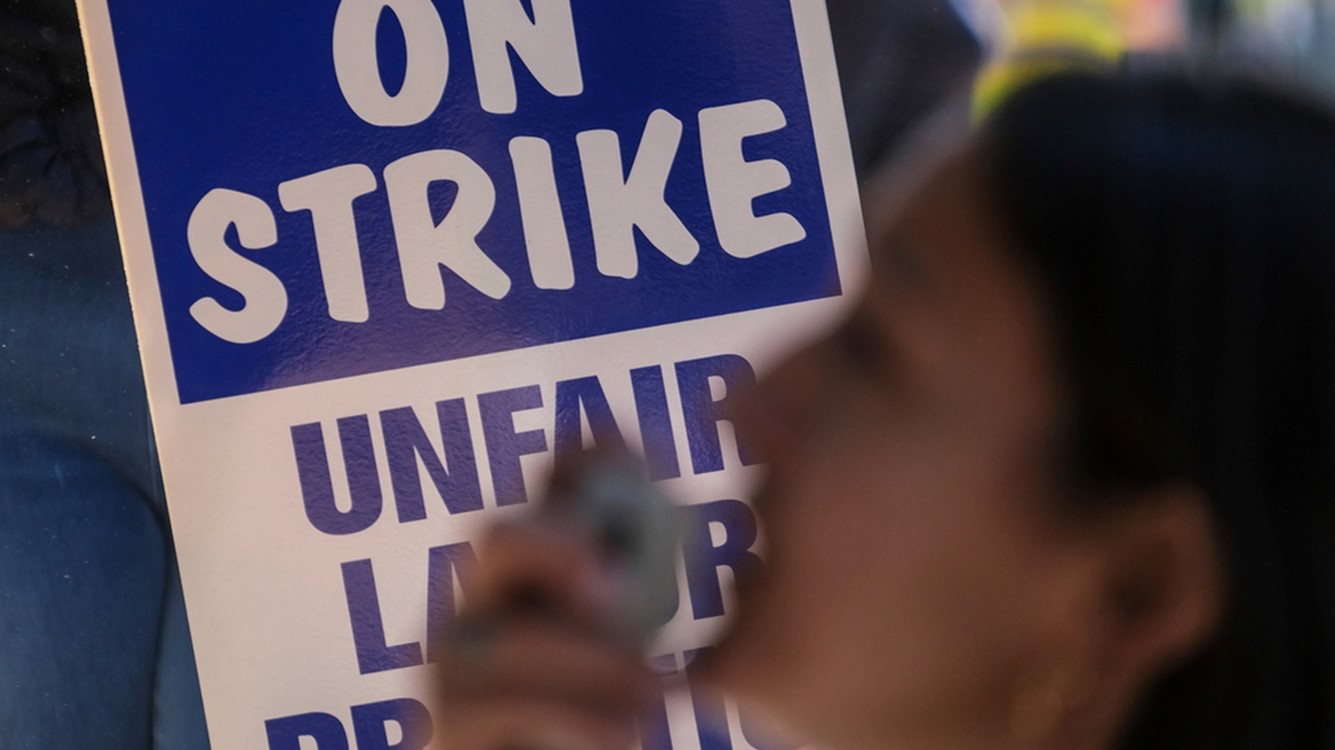End of strikes buoys wages
Leisure and hospitality added 40,000 jobs, mostly in restaurants and bars.

December 8, 2023
Payroll employment rose by 199,000 in November, a pickup from an unrevised 150,000 gain in October. Revisions for September were 35,000 lower than previous estimates. Gains in the public sector increased by 59,000 in November, with public education and staffing shortages elsewhere at the state and local levels driving those gains. Quit rates have moderated as the premium for job hoppers fell to the lowest level since June 2021, according to the ADP data. A surge in quits and lagging union wages prompted younger teachers and staff to seek opportunities elsewhere during the peak of the hiring frenzy in late 2021 and early 2022. Staffing shortages across state and local governments remain acute.
Healthcare and social assistance led gains with a jump of 93,200, the largest monthly surge since August. Nurses and healthcare aides remain in short supply due to aging demographics. Doctors occupy one of the few professions where, according to research by ADP, workers retire earlier instead of later when they are paid more. Wealthier older workers are hiring concierge doctors to skip the long waits for routine exams.
Leisure and hospitality added 40,000 jobs, mostly in restaurants and bars. Staffing in the accommodation industry remains below February 2020 levels. Leisure travel has rebounded faster than business travel. Wealthier households are paying to sit in the best seats at the front of the plane. Large conferences have returned, while smaller conferences remain below pre-pandemic levels.
The rebound due to strikes was underwhelming. Hiring in motion pictures and sound production and motor vehicle and parts production added back 47,000 jobs, well below what was lost to strikes. Projects and plants that were idled by work stoppages take time to ramp up. Many plants were still only running at partial capacity during the week of the survey, while suppliers are still ramping up.
Retail hires fell short of seasonal norms and contracted by 38,000. Traditional department stores took the biggest hit, as they braced for slower foot traffic and the acceleration of spending online. One major retailer announced a cut in entry level pay, as more consumers pivot online and spend on services instead of goods.
Hiring in interest-rate sensitive sectors such as finance, real estate and professional business services remained subdued. Those sectors drove gains earlier in the recovery and are now a drag on overall employment gains. Quit rates in those sectors have also seen some of the largest declines this year, which have stemmed attrition rates.
Transportation and warehousing fell 5,000, marking the second month of contraction. The freight industry has been in a recession. The industry has contracted during seven of eleven months this year. The largest losses tied to a high-profile bankruptcy in August when one of the oldest freight firms went under in the same week it settled its Teamsters’ contract.
Average hourly earnings surprised to the upside and jumped 0.4%, double the pace of October. A pickup in wages in the information sector rebounded after almost no change in recent months. That reflects an unwinding of the actors’ strike. Wages in heavy manufacturing continued to rise but the increases triggered by the UAW contracts are still ahead. The contracts were not ratified until after the survey week. That means the wage gains associated with those shifts will show up in December. Competitors to the Detroit Big Three raised wages when UAW contracts were signed to remain competitive. The new contracts bring UAW wages back to 2007 levels by the end of the contract period; that is before adjusting for inflation and underscores how much workers lost during the restructuring of the vehicle sector during the height of the global financial crisis of 2008-09.
Average hourly earnings rose 4.0% from a year ago, the same as October. Hours worked picked up slightly with the end of the actors’ strike, which means a bigger boost to weekly earnings and helps explain some of the better-than-expected holiday spending and travel figures. TSA throughput soared well above 2019 levels during the Thanksgiving holiday.
Separately, the unemployment rate dropped to 3.7% in November from 3.9% in October. The move down was for all the right reasons. Participation in the labor market increased to 62.8%, driven by men and Black teens. Complaints about child labor laws have soared this year, while some states have lowered the age at which young people can work. All of the improvements in participation rates were among those with a high-school degree or less.
The household survey, which comprises the unemployment rate, showed a 747,000 surge in employment for the month, the strongest since January. That reflects a catchup in employment after a contraction in that part of the employment survey for October. The household surveys suggest that the bounce back following strikes may be greater as we move into December.
The ranks of those forced to accept part-time for economic reasons plummeted. That reflects a ramp up following the actors' strike. Many in the industry took on part-time jobs to make ends meet when projects were idled due to strikes. Multiple job holders fell slightly but remain close to the peak hit in February 2020.
Parental leave fell in December but remains a record for the month of November. The data go back to 2003. Both men and women are taking advantage of the expansion of such programs. Those shifts and more flexible work schedules are helping to keep more women in the workforce amidst a childcare crisis. The expiration of COVID-era subsidies is expected to shutter some childcare facilities in the months to come. The U.S. remains a laggard among its peers in women’s participation in the labor market and its support of working parents. The shifts we are seeing have driven a wedge between improvements in participation for those with higher education levels and more access to parental leave and flexible work schedules as well.
The ranks of the long-term unemployed have risen from lows we saw during the height of the hiring frenzy in 2022. That means it is becoming harder to find a job than it was earlier in the recovery but it’s still close to the pace we saw prior to the crisis in February 2020.
The ranks of those out sick and unable to work increased during the month, with the spread of COVID variants, RSV and the flu. Those levels remain well below the levels hit during the height of the pandemic, but are adding to staffing shortages, especially for frontline workers. Those out due to vacation fell during the survey week, which did include the Thanksgiving holiday.
The response rate for the survey picked up from 58% in October to 67% in November. The October response rate fell to a 21-year low.
That is welcome news for the Federal Reserve, which is looking for a cooling of inflation without an abrupt surge in layoffs and unemployment.
Diane Swonk, KPMG Chief Economist
Bottom Line
Employment gains have cooled from the frenzied pace of 2021 and 2022 and are starting to normalize closer to the pace of 2019, before the onset of the pandemic. That is welcome news for the Federal Reserve, which is looking for a cooling of inflation without an abrupt surge in layoffs and unemployment. The goal is to finish off inflation with a slowdown instead of a collapse in demand due to recession. The Fed is expected to remain on hold again next week when it meets to assess its next moves. Cuts in rates are still not likely until well into 2024. The Fed is expected to remove a rate hike from its forecast for short-term interest rates in December. The first cut in rates is now expected in May.
Explore more

Strikes suppress October hires
Leisure and hospitality, healthcare and education lead gains.

KPMG Economics
A source for unbiased economic intelligence to help improve strategic decision-making.

Retail therapy… The outlook for the U.S. consumer
A soft landing is possible and even probable…but our journey is not yet done.
Subscribe to insights from KPMG Economics
KPMG Economics distributes a wide selection of insight and analysis to help businesses make informed decisions.
Meet our team

